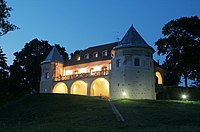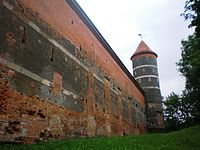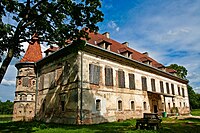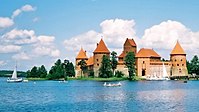
A hillfort is a type of fortified refuge or defended settlement located to exploit a rise in elevation for defensive advantage. They are typical of the late European Bronze Age and Iron Age. Some were used in the post-Roman period. The fortification usually follows the contours of a hill and consists of one or more lines of earthworks or stone ramparts, with stockades or defensive walls, and external ditches. If enemies were approaching, the civilians would spot them from a distance.
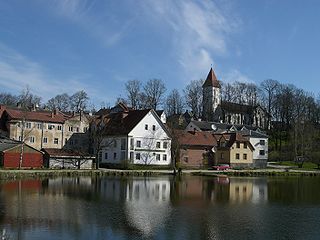
Talsi is a town in Latvia. It is the administrative centre of Talsi Municipality. It is nicknamed the "green pearl of Courland".

Bauska Castle is a complex consisting of the ruins of an earlier castle and a later palace on the outskirts of the Latvian city of Bauska.

Panemunė Castle is a castle on the right bank of the Nemunas river, in Vytėnai, Jurbarkas district, Lithuania. The initial hill fort of the Teutonic Knights was replaced by a castle built in 1604-1610 by a noble Hungarian descent János Eperjes. The name "Panemunė", it is guessed, arose from the former Panemunė Manor that was once here. Panemunė Castle was not designed to be a stronghold for the defense of the land but a typical, for the beginning of the 17th century, nobleman castle with defensive fittings, residential buildings, and farm buildings. Panemunė Castle became one of the most beautiful Renaissance era buildings in Lithuania. The castle was reconstructed around 1759 by Gelgaudai family. The new owners established lavish manor house-like interiors with frescos, which have been recently discovered, while the remaining wings of the castle is still under restoration. At present the castle is prepared for visitors. The castle stands in a park on a high hill and is surrounded by five cascading ponds. During a tourism season, works of Vilnius Art Academy are exhibited in the castle. It is possible to walk inside the castle, and admire the wonderful view that opens from the castle tower.
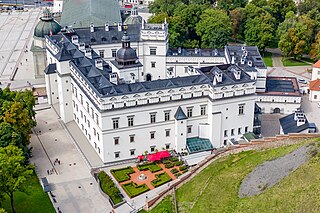
Lithuania attracts many visitors from neighbouring countries and from all over the world. In 2018,there were 1.7 million foreign visitors to Lithuania for business, family and leisure. The historical legacy of the Grand Duchy of Lithuania, its rich history, architecture, pristine nature, seaside and spa resorts are the main attraction points of Lithuania. Domestic tourism is also highly popular: in 2018 it grew by 12%. Lithuanians also prefer to spend their vacations in Lithuania – 70 percent.

The ruins of Embūte Castle are located in Embūte, Embūte Parish, South Kurzeme Municipality in the Courland region of Latvia, not far from an ancient hillfort erected by Curonians. It was an ancient Curonian settlement and is mentioned in ancient chronicles as a place with strong Curonian resistance to German crusaders. The bishop's castle was built as a border castle with Lithuania by Livonian Order on a steep hill on the right bank of the Lanka river, which flows into left tributary of the Venta. Later manor house was built using the walls of the former castle, which can be seen in the division of the rooms and the building material. Today, the ruins are surrounded by trees and are in poor condition.

Lūznava Manor is a manor house located in the village of Lūznava, Rēzekne Municipality, Latvia. Today the local primary school of Lūznava is located in the manor house. There is also a 19th-century barn near the manor house.

Ezere Manor, also called Lielezere Manor, is a manor house in the historical region of Courland, in western Latvia near the border with Lithuania. Ezere Manor house, constructed in 18th-19th centuries, is an architectural monument of national importance.

Reņģe Manor, also called Ruba Manor, is a manor house for the von Nolcken family that was built between 1881 and 1882 in the historical region of Zemgale, in Latvia. It is located about 2.5 km west of both the village of Ruba and the railroad bridge where the Glūda–Reņģe Railway crosses the Vadakste river along the border of Latvia and Lithuania. Manor building currently houses the Ruba Elementary School.

Krāslava Old Palace was a Krāslava Manor house in the historical region of Latgale, in eastern Latvia. Only barely visible ruins remaining. The building housed the Plater family library after the construction of their new palace.
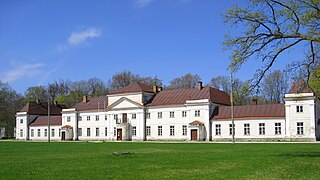
Varakļāni Palace is a palace in Varakļāni, Varakļāni Municipality in the historical region of Latgale, in Latvia.

Dobele Castle is a castle in the town of Dobele in the historical region of Zemgale, Latvia. The Livonian order built the castle on the west bank of the Berze river in 1335, on the site of an old hillfort.

Alatskivi Castle is a neo-Gothic castle in Alatskivi, Estonia. Dating to the 17th century, it is situated in Peipsiääre Parish, Tartu County. It was rebuilt in the late 19th century by Baron Arved von Nolcken, modeled on the royal residence of Balmoral in Scotland. A renovation occurred between 2005 and 2011. Five rooms on the first floor house the Eduard Tubin museum, which documents his accomplishments as a music composer and conductor.
Hillforts are fortified settlements that were built across Europe in the Bronze Age, Iron Age, and, to a lesser extent, the Early Middle Ages. The following pages are lists of hillforts:
This page is based on this
Wikipedia article Text is available under the
CC BY-SA 4.0 license; additional terms may apply.
Images, videos and audio are available under their respective licenses.






